6 Things I Saw in Company Class
by former PBT intern Kathleen Fennell
Three months of elementary dance classes at the tender age of four and attendance at a handful of ballets are the sum of experience I brought to observe company class at Pittsburgh Ballet Theatre. For dancers, class is a daily ritual to wake up their muscles and prepare them for the day. Throughout the 1.5-hour class, I asked myself questions like: How do they lift their legs so high? What are they doing with their hands? Where do they find the energy to do this every single day? What purpose do these stretches serve? The musicality of the dancer’s movements entranced me. Even with no story behind the choreography, their motions and technique were magnificent.
Here is a breakdown of my observations during the course of company class:
The studio is quiet as company members trickle in.
Each dancer appears to be in his or her own world, stretching independently and preparing for class. Some dancers do sit ups or planks while others extend their ankles on balance boards. They use tennis balls, muscle rollers, and stretch bands. Many of them are sporting headphones, readying themselves for the stretches and exercises to come.
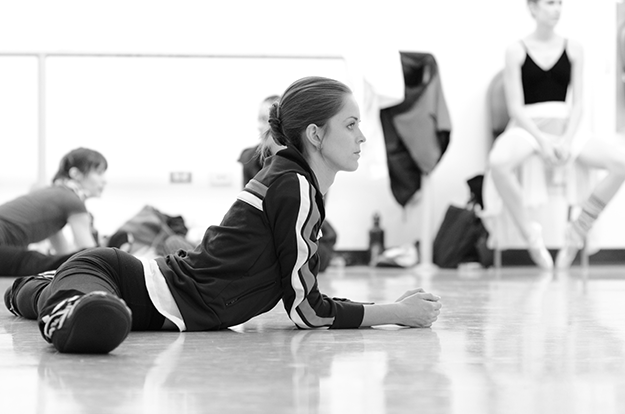
Artist: Danielle Downey | Photo by: Aimee DiAndrea
There seems to be a hierarchy of respect and space.
I find myself wondering how the dancers choose their spots for class. When they approach the barre, I notice the principals are seemingly grouped together and I am curious if the room is divided by rank or by chance. There does not appear to be assigned places or anything that official in nature, but perhaps it is part of a routine that stuck, like which lunch table kids eat at in middle school.
I also begin to think about the relationships between the dancers. Do they choose their spot at the barre next to a friend? Husband and wife Christopher Budzynksi and Alexandra Kochis dance next to each other, which prompts me to assume that the dancers’ relationships are at play in the selection process.
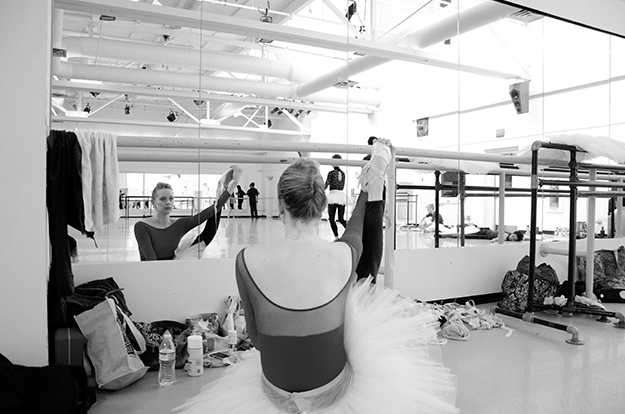
Artist: Julia Erickson | Photo by: Aimee DiAndrea
Ballet has a language all its own.
At 9:20 a.m., there is some unspoken cue that Ballet Mistress Marianna Tcherkassky is ready to begin. Everyone takes their places at barre, notes begin to spill out of the piano, and the dancers start preparing their muscles for the day, leveraging their legs against the barre.
The ballet mistress calls out combinations quickly while demonstrating the movements with abbreviated motions. Immediately, the dancers pick up and replicate the exercises. As they watch, they use their hands to map out the paths their legs will take while Tcherkassky demonstrates.
At about 10:05 a.m., Tcherkassky does not need to say a word. The dancers lift the barres and carry them across the room, somehow knowing it was time for the next phase of class.
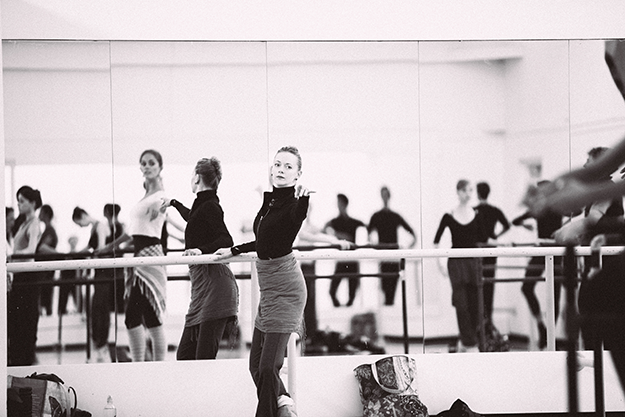
Artist: Julia Erickson | Photo by: Duane Rieder
With music as a guide, each individual combination becomes art.
Company pianist Yoland Collin improvises music from his repertoire and as the notes sync to the combinations, the positions and combinations become lyrical and rhythmic. Collin knows when to speed up or slow down based on the motion Tcherkassky lays out for the dancers. He watches the group and plays along accordingly, sometimes with classical numbers and other times with a modern spin.
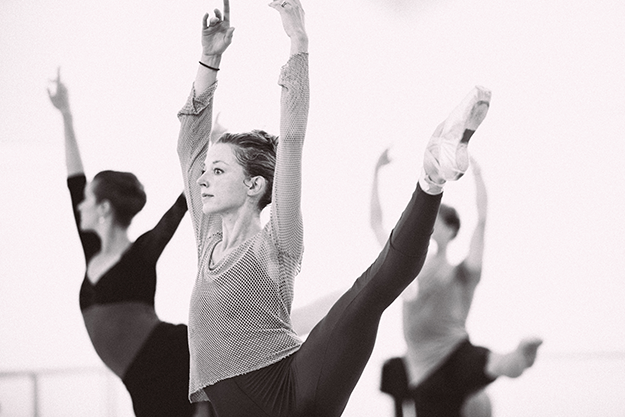
Artist: Alexandra Kochis | Photo by: Duane Rieder
Throughout class, the dancers warm up their muscles for a day full of rehearsal.
Each dancer begins class bundled up with a series of layers on: jackets, sweatshirts, jumpsuits, even a scarf here and there. As class progresses, each dancer peels off layers at a different pace until most of them are in just leotards and tights.
They start low on the barre and as they loosen up, begin stretching their limbs higher. Eventually, when their muscles are warm and supple, they move away from the barre and the female dancers don their elegant pointe shoes for center work. The combinations become even more intricate and exquisite as the dancers take turns leaping across the room.
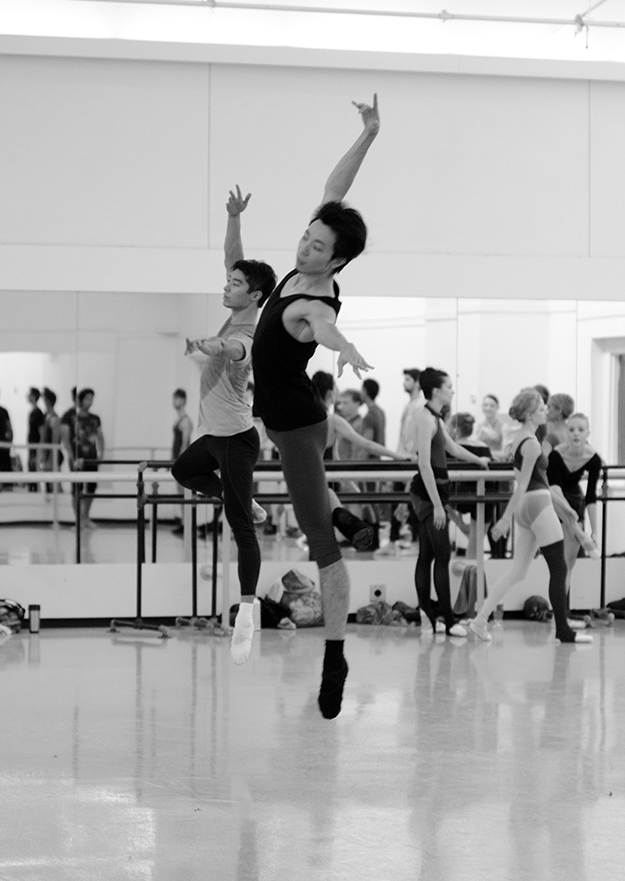
Artist: Yoshiaki Nakano | Photo by: Duane Rieder
At the end of class, everyone in the studio begins clapping.
I was surprised and moved by the outburst of applause from the dancers at the close of class. It conveyed a sense of camaraderie and gave me a glimpse at the deep love dancers have for their art. Each dancer also takes a moment to address the pianist, Collin, and thank him for his accompaniment. When they are done with class, the dancers take a short break and then continue their day with two three-hour rehearsal blocks to perfect the next ballet the company is staging.
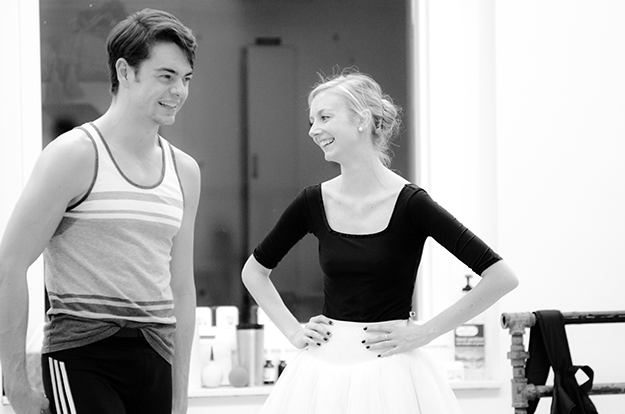
Artists: Jake Unger & Hannah Carter | Photo by: Aimee DiAndrea
